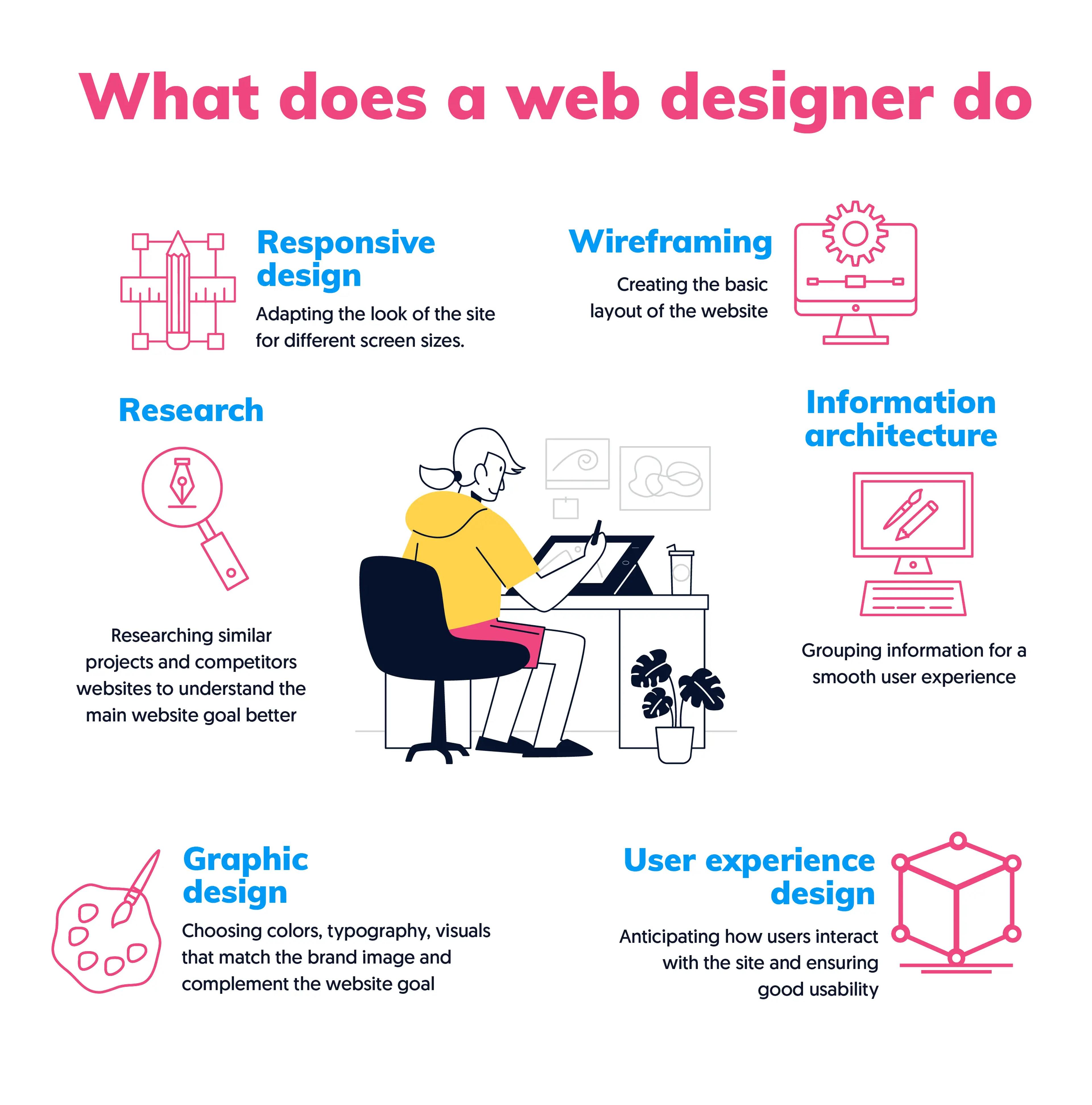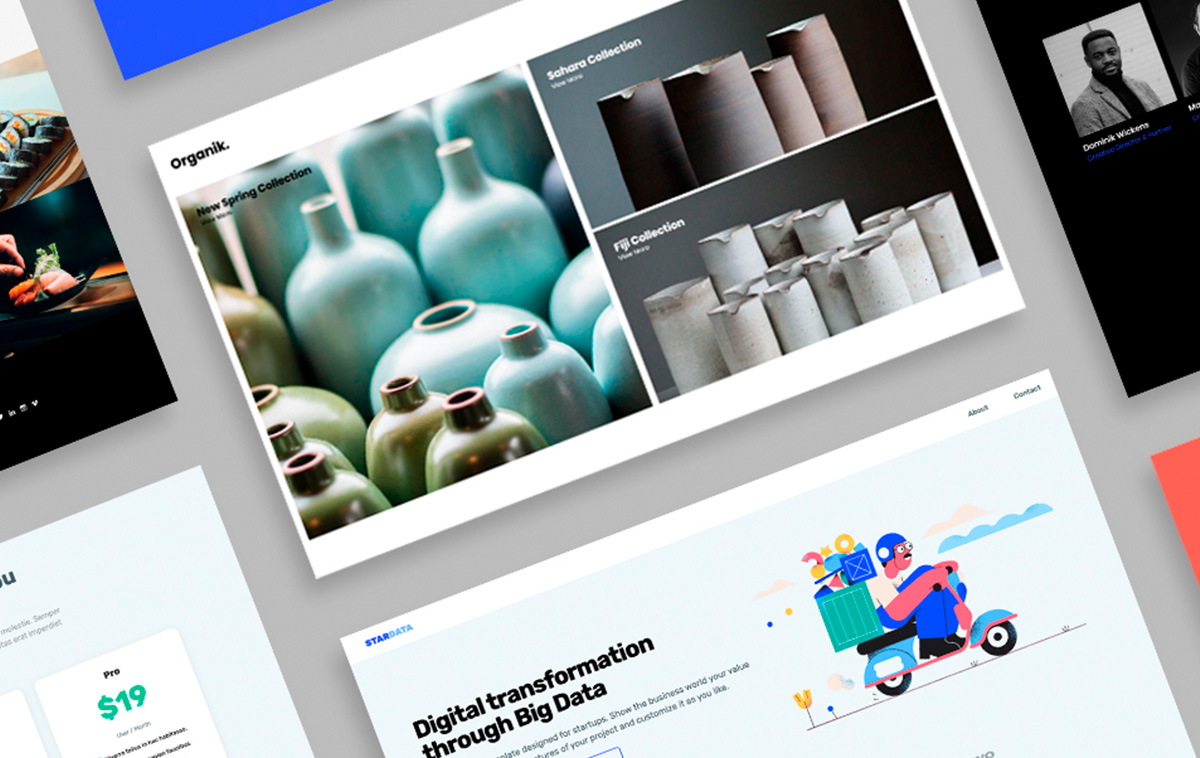Aligned Position Web Design: Professional Web Development to Maximize Your Online Impact
Aligned Position Web Design: Professional Web Development to Maximize Your Online Impact
Blog Article
The Most Effective Sorts Of Website Design to Enhance Customer Experience and Interaction
In the ever-evolving landscape of electronic communication, the effectiveness of Web layout substantially impacts user experience and involvement. Various design methods, such as minimalist, responsive, and interactive layouts, each deal unique advantages that can satisfy diverse user requirements. Recognizing which sorts of Web style best offer these objectives can be crucial for companies aiming to enhance consumer fulfillment and retention. Nonetheless, the concern continues to be: which design elements truly resonate with individuals and foster significant involvement? The exploration of these principles reveals essential insights that may redefine your strategy to website design.
Minimal Web Style
As digital landscapes end up being progressively cluttered, minimalist website design has become a powerful method to improving individual experience. This style viewpoint prioritizes simpleness, concentrating on important elements while getting rid of unnecessary distractions. By making use of enough white area, simple navigation, and a limited shade scheme, minimalist design fosters clarity and routes user interest to crucial material.
The core principle of minimalist website design is to create a smooth interaction for customers. By lowering cognitive tons, users can promptly realize details without feeling overwhelmed. This straight approach not just improves usability but likewise encourages involvement, as visitors are most likely to explore a website that is simple and aesthetically attractive to navigate.
In addition, minimal style often stresses typography and imagery, using these elements strategically to communicate messages effectively. This concentrate on essential elements can boost brand identification and create a remarkable user experience. Basically, minimalist Web style is not simply a trend; it is a thoughtful method that identifies the value of user-centered design. By removing nonessential aspects, developers can create an extra appealing, reliable, and pleasurable Web experience for all customers.
Receptive Web Style
In today's diverse electronic setting, receptive website design has become vital for developing a seamless individual experience across a multitude of devices. As users gain access to websites on smartphones, tablets, laptop computers, and desktop computers, the capability of a web site to adjust its design and material to different display dimensions and resolutions is critical.
Responsive website design utilizes adaptable grids, pictures, and CSS media queries to make sure that Web material is provided ideally, no matter the tool utilized. This approach not just improves the visual charm of a web site however also significantly boosts functionality. Customers are more most likely to engage with a website that uses a consistent experience, as it eliminates the aggravation of having to focus or scroll excessively.
By embracing responsive style, businesses can enhance their presence and get to a broader target market. In summary, receptive Web design is a basic technique that enhances individual experience, interaction, and total complete satisfaction.
Interactive Website Design
Receptive Web layout lays the groundwork for improving customer experience, but interactive website design takes this an action further by engaging individuals in a much more dynamic way - Aligned Position Web Design. By integrating aspects such as computer animations, clickable models, and real-time feedback, interactive website design mesmerizes individuals, drawing them right into a richer surfing experience
This strategy not just cultivates engagement yet additionally urges users to check out material actively rather than passively consuming it. Techniques such as gamification, where customers make benefits for finishing jobs, can substantially improve the moment spent on a site and improve overall contentment. Additionally, interactive attributes can streamline intricate information, making it extra digestible and satisfying.
Including interactive design aspects can also bring about greater conversion prices, as customers are more probable to engage with a website that actively includes them. Aligned Position Web Design. Ultimately, interactive website have a peek here design changes customer experiences right into memorable journeys, making sure that site visitors return time and again
Apartment Design
Characterized by its minimalistic method, flat style highlights simplicity and functionality, stripping away unnecessary aspects and focusing on crucial features. This design viewpoint prioritizes use, ensuring that customers can browse interfaces easily and effectiveness. By utilizing a clean aesthetic, level design eliminates the mess typically discovered in a lot more elaborate styles, thus enhancing user concentrate on web content and capability.
The characteristic of level style hinges on its use vibrant shades, basic typography, and geometric shapes. These elements contribute to an aesthetically enticing interface that is both approachable and modern-day. Furthermore, flat layout cultivates a sense of quality, permitting individuals to discern vital actions and details without interruption.
Moreover, level design is specifically effective in responsive Web layout, as its simpleness translates well throughout numerous devices and display dimensions. By concentrating on necessary features, flat style not just fulfills user needs however additionally encourages smooth communication, making it a crucial part of effective Web layout methods.
Flexible Website Design
Adaptive website design customizes the individual experience by developing numerous fixed layouts tailored to different screen dimensions and tools. Unlike receptive layout, which fluidly readjusts a solitary format, adaptive design utilizes unique designs for certain breakpoints, making certain optimum discussion on different systems. This strategy enables designers to concentrate on the distinct attributes of each device, improving functionality by providing exactly what users need based my website upon their context.
Among the primary advantages of flexible website design is its capability to optimize load times and efficiency. By offering customized web content and photos that fit the customer's gadget, web sites can reduce data use and boost loading speeds. This is especially helpful for individuals with slower links or restricted data strategies.

In addition, adaptive style facilitates a more regular and controlled branding experience. Since designers develop multiple formats, they can ensure that the visual components straighten with the brand's identity across different systems - Aligned Position Web Design. This causes a natural user experience, improving involvement and advertising customer retention
Final Thought
Minimal style promotes clarity and focus, while responsive style guarantees adaptability throughout numerous tools, promoting availability. Jointly, these layout comes close to contribute to the creation of user-friendly settings that not only improve fulfillment however also drive greater conversion rates, underscoring their critical relevance in modern Web design strategies.

Minimal style promotes quality and focus, while responsive style makes sure versatility throughout various you could try this out devices, promoting availability. Collectively, these design approaches add to the production of straightforward settings that not only boost complete satisfaction yet additionally drive greater conversion prices, highlighting their essential relevance in modern Web style techniques.
Report this page